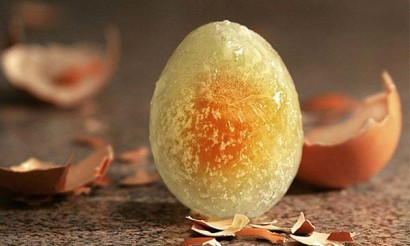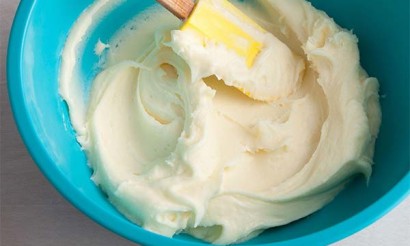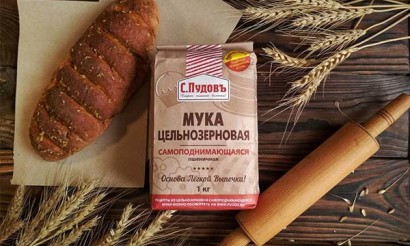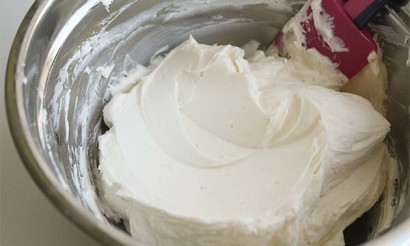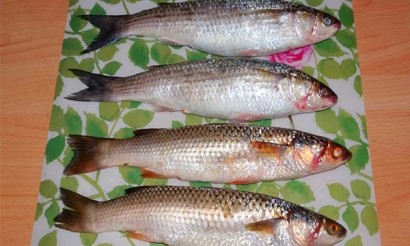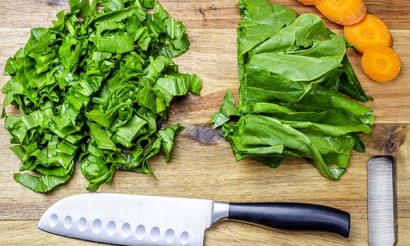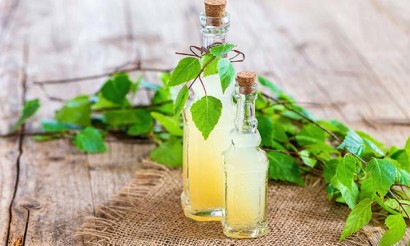Which fish have the most vitamin D
Vitamin D is the only vitamin, and in general a useful, nutrient that can be produced by the human body under the influence of ultraviolet rays. It would seem that everything is simple. But, almost half of the world's population is still deficient in this element, because not everyone gets enough sunlight.
What is vitamin D for?
In general, vitamins D is a group of vitamins, the number of which is 6 pieces. But, only 2 of them - D2 and D3 are synthesized by the human body under the influence of ultraviolet light.
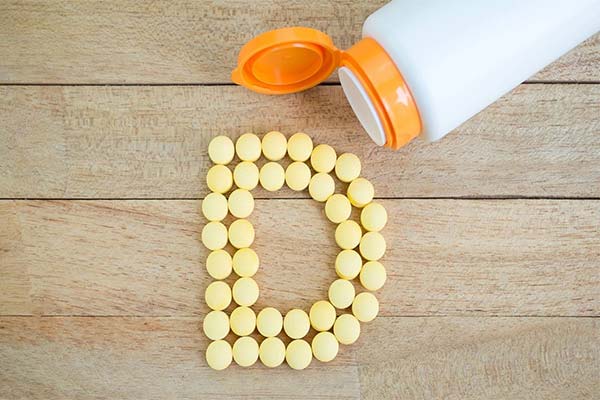
Calciferol is another name for the element. It is required by the human body to support the metabolism of calcium and phosphorus. This is its main, key role. D2 is ergocalciferol, D3 is cholecalciferol. However, the substance also serves other functions, including:
- The construction of bone tissues;
- the absorption of nutrients by them;
- maintaining the figure in the tone;
- preventing the development of diseases of the cardiovascular system;
- accelerating the healing of skin diseases;
- elevation of mood and vitality;
- activation of the work of the brain;
- Maintaining hormonal balance;
- Improvement of testosterone and estrogen synthesis.
Vitamin D directly affects the work of the brain, so its deficiency affects learning ability, mental activity. Its deficiency does not allow you to concentrate and normally learn, work. On its quantity depends on the condition of hair, teeth, nails. Without a sufficient amount of vitamin D, it is impossible to absorb calcium, so experts recommend consuming foods rich in these components together. So you can get the maximum benefit for the body from the diet.
From a lack of calciferol affects the musculoskeletal system, which leads to the development of rickets, osteoporosis, an increased tendency to injury. Prolonged vitamin deficiency often leads to diabetes, cancer of the genitals, severe obesity. Deficiency of a useful and necessary substance for the body leads to poor appetite, frequent urination, a constant feeling of thirst, an agitated state of the nervous system.
Often signs of deficiency are:
- rapid heartbeat;
- Malaise (observed over a long period of time);
- Constant thirst;
- visual impairment.
Since sunlight for the body's production of vitamin D may not be enough, each person needs to organize a proper diet, including in the menu of foods rich in them. This will be discussed below.
Vitamin D levels
The daily norm of this substance for a healthy adult is 500-600 ME. However, this is the norm for people who get enough ultraviolet light. Thus, during pregnancy and in adulthood, the need for calciferol increases by another 200 ME. It is worth saying that the body of the elderly is not capable of synthesizing vitamin D. But if a person has a deficiency of the substance, the rate of consumption should be as much as 4000 ME.
As a rule, vitamin D deficiency is observed in winter, when solar activity is significantly reduced. It has a good feature - to accumulate in the body. Therefore, during the summer months, with frequent exposure to sunlight, you can accumulate vitamin D in order to use it in winter.
It is worth noting that only vitamin D2 can be obtained from food. However, crucial for human health is vitamin D3, which is synthesized only by exposure to the sun. So, in order not to be deficient in these substances, it is worth to eat calciferol-source foods and to spend enough time in the sun every day.
Which foods contain the most vitamin D
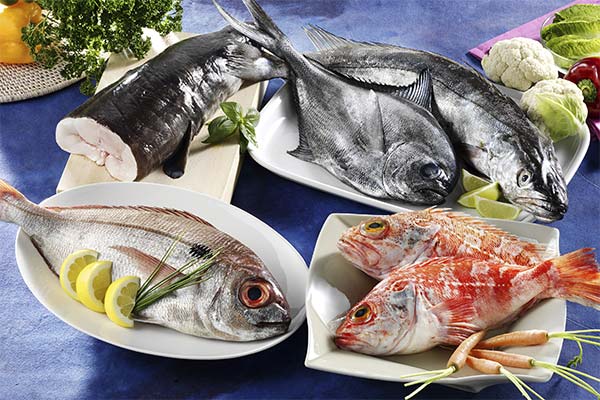
It is not for nothing that in the Soviet years it was practiced to consume fish oil for young children. After all, vitamin D is very important for the proper development of the musculoskeletal system. Today, fish oil is safely replaced by calciferol solution, which is given to babies born in the fall and winter. There are 230 mcg of the useful substance per 100 grams of fish oil. But this product is not the only one that contains a lot of it.
Fish is the best source of calciferol, especially sea fish. Halibut, particularly its liver, is considered to be a record-holder and contains 2500 ICG of the useful element per 100 grams of product. Next come putassu and sprats in oil, which contain 1200 Mg of calciferol. Slightly less salmon has 750 mg of the active ingredient. Cod and its liver have 375 mg of vitamin D per 100 grams, Atlantic herring has slightly more than 560 mg. Mackerel and tuna are next with 250 and 440 Mg, respectively. Among river fish, the record holder is the eel. Its 100 g contains 450 mcg of vitamin D. That is, the more fatty the fish, the greater its content of the useful element.
In general, any fish liver - halibut, cod, whale or tuna - is a storehouse of calciferol. They are champions among food products in terms of content of this substance. However, this fact applies only to freshly caught and properly processed liver. Canned foods contain much less vitamin D. So, 100 grams of dried salmon covers the daily requirement of this substance by 190%, a little less - 182% can be filled by smoked eel. Baked or fried carp can cover 150% of the norm of vitamin D by eating 100 grams, and smoked trout - 142%, salted mackerel - 125%, canned salmon - 105%, canned sardines - 22%. However, according to research data, wild fish contain several times more vitamin D than artificially raised fish. This should be taken into account when buying fish.
Seafood is not famous for its high content of this substance, which is necessary for the human body. Among them, the greatest amount is found in shrimp - 10 MKG per 100 grams. However, other foods also contain a lot of calciferol, which allows to replenish its deficiency. These are:
- soybean oil (115 MKG);
- cedar oil (70 MKG);
- sunflower oil (43 MKG).
Vitamin D is found in liver of mutton and beef, red and black caviar, egg yolk, shnitake mushrooms, whole milk and dairy products, especially cheese and butter. Its content in kefir and yogurt is very low - 1% of the daily requirement per 100 grams of product.
How to consume foods high in calciferol
Calciferol refers to fat-soluble vitamins. This indicates that for best absorption it is necessary to consume foods with fatty components. For example, vegetable oil, sour cream, high-fat yoghurt. Thanks to them, the process of proper distribution of vitamin D in the tissues and organs of the human body is ensured. But that his assimilation was still as full as possible, a person should have enough time in the sun. That is, even if the diet will consist of foods containing a significant proportion of calciferol and replenish the daily requirement of the body, without ultraviolet light it will not be properly absorbed.
The greatest solar activity is observed from morning until lunch, so at this time everyone needs to be outdoors. It is not necessary to be in direct sunlight to absorb the vitamin. Even in the shade, ultraviolet light will actively act on the human body.
The fat-soluble substance is quite resistant to degradation under the influence of negative factors. However, it is still necessary to store and cook food according to the rules. Vitamin D is destroyed by sun and light, and by exposure to oxygen. Therefore, food should be stored in the refrigerator. Fish and liver should be defrosted naturally, in no case using hot water, microwave or other means to accelerate defrosting. They will lead to the destruction of calciferol.
Do not eat fish alone all day in order to replenish vitamin D. You can eat oatmeal or scrambled eggs for breakfast, add beef liver as a second course for lunch, and eat fatty fish in the evening. If you season it with grated cheese, you get a dinner rich in calciferol.
The most popular way to cook fish is frying and roasting. However, this heat treatment destroys vitamin D by almost half. If you do use this cooking method, it is better to fry fish quickly in a minimum amount of oil. It can be cooked in the oven to perfection. Boiling in liquid - milk or water, as well as steaming, are traditionally considered to be healthier methods of cooking. After all, in this case, the heat treatment of fish is carried out at lower temperatures than during the frying. Therefore, many nutrients and vitamins, particularly calciferol, are preserved better. But you should not cook fish for a long time, which also negatively affects its composition. The longer the cooking time, the more valuable elements will be destroyed.
Another way to heat treat fish is to bake it. According to research data, salmon baked in the oven has retained all the vitamin D, while exactly the same salmon, but roasted lost half of the useful substance. Such a study will help housewives choose the best way to cook fish.
Excess vitamin D
Calciferol deficiency in the human body is dangerous, but its excess is no less harmful. In such a case, there is observed:
- loss of appetite, weakness, headaches or dizziness;
- Nausea, vomiting, diarrhea or, on the contrary, constipation;
- soreness in the muscles and joints;
- high blood pressure;
- seizures or fever - in rather advanced cases.
About the same symptoms are characteristic of an excess of calcium in the body. At the same time, an overabundance of vitamin D and calcium together leads to impaired functionality of the cardiovascular organs, liver and kidneys. There is a deposition of calcium salts.
In conclusion, it should be said that if you identify a vitamin D deficiency in the body to replenish it only with the help of food you can not. It is necessary to drink a fat-soluble vitamin, bought in the pharmacy, which will raise its level to the desired norm for 1-2 months. But do not drive the body to an acute shortage of useful elements. To prevent vitamin D deficiency, it is worth introducing into the diet the mandatory consumption of fish 2-3 times a week, as well as cod liver, tuna, which are excellent for making sandwiches, snacks, salads.
«Important: All information on this site is provided for informational purposes only. For educational purposes only. Consult a health care professional before applying any recommendations. specialist before using any of the recommendations. Neither the editors nor the authors shall be liable for any possible harm caused by materials."


